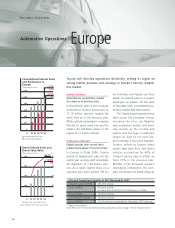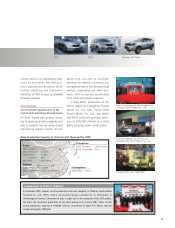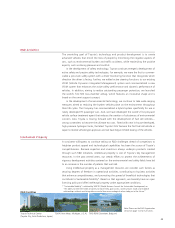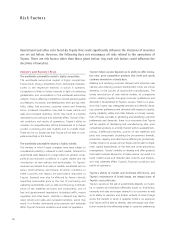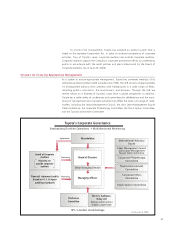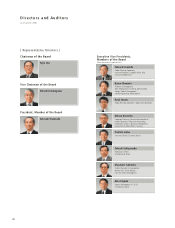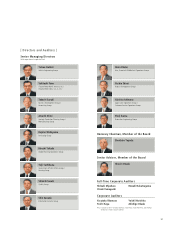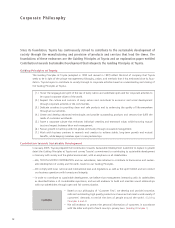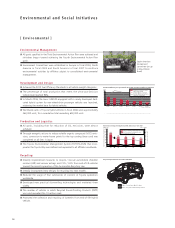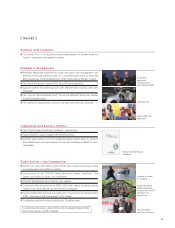Toyota 2006 Annual Report Download - page 48
Download and view the complete annual report
Please find page 48 of the 2006 Toyota annual report below. You can navigate through the pages in the report by either clicking on the pages listed below, or by using the keyword search tool below to find specific information within the annual report.
46
Corporate Governance
Toyota’s Basic Approach to Corporate Governance
Toyota’s top management priority is to steadily increase corporate value over the long
term. Further, our fundamental management philosophy is to remain a trusted corporate
citizen in international society through open and fair business activities that honor the lan-
guage and spirit of the law of every nation. In order to put that philosophy into practice,
Toyota builds favorable relationships with all of its stakeholders, including shareholders,
customers, business partners, local communities, and employees. We are convinced that
providing products that fully cater to customer needs is essential to achieve stable, long-
term growth. That philosophy is outlined in the “Guiding Principles at Toyota.” Further, to
explain those principles in more detailed terms, we prepared and issued the “Contribution
towards Sustainable Development” statement in January 2005. Through such initiatives,
Toyota is taking concrete measures to reinforce its corporate governance functions and to
become an even more competitive global company.
Specifically, we have introduced a unique management system focused on prompt
decision making for developing our global strategy and speeding up operations.
Furthermore, we have a range of long-standing in-house committees and councils responsi-
ble for monitoring and discussing management and corporate activities from the viewpoints
of various stakeholders to ensure heightened transparency and the fulfillment of social oblig-
ations.
Ultimately, however, a well-developed awareness of ethics among individuals is the
key to successful governance systems. Without such awareness—regardless of the gover-
nance structure of a company—corporate governance cannot function effectively. Toyota
has a unique corporate culture that places emphasis on problem solving and preventative
measures, such as problem solving based on the actual situation on the site and highlight-
ing problems by immediately flagging and sharing them. In other words, because Toyota’s
approach is to build in quality through manufacturing processes, enhancing the quality of
everyday operations strengthens governance. Toyota’s management team and employees
conduct operations and make decisions founded on that common system of checks and
balances and on high ethical standards.
Toyota’s Management System
In June 2003, Toyota introduced a new management system that includes a streamlined
Board of Directors and the new position of non-board managing officers with responsibility
for specific operational functions. A distinctive feature of Toyota’s management system is
that senior managing directors do not focus exclusively on management. They also serve as
the highest authorities in the specific operational functions and as the link created between
management and on-site operations. Retaining an emphasis on developments on the site—
one of Toyota’s perennial strengths—helps directly coordinate decision making with actual
operations. Management decisions can be swiftly reflected in operations, while overall man-
agement strategy is able to readily incorporate feedback from frontline operations.
Further, as part of its management reforms, the Company abolished the retiring
directors’ bonus payments system at the close of the Ordinary General Shareholders’
Meeting in June 2006 in order to further strengthen the linkage between directors’
remuneration and the Company’s business results and shareholders’ returns and to
establish a highly transparent remuneration system that reflects duties and achievements
in each term of office.


